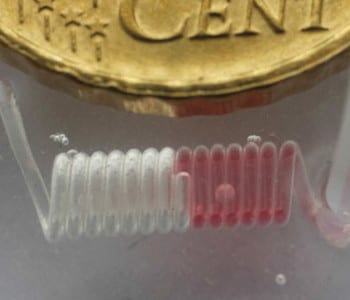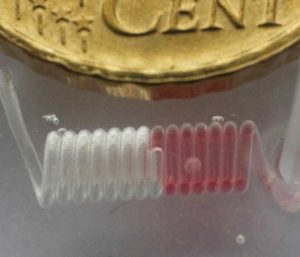Scientists at Wageningen University, the Netherlands and the University of Castile-La Mancha, Spain have recently developed a new and straightforward method to fabricate intricate microfluidic devices. Termed ESCARGOT, which stands for Embedded SCAffold RemovinG Open Technology, their new approach avoids the complexities of standard microfluidics fabrication processes.
With countless important applications across all practical areas of science and engineering, microfluidics is gathering ever-increasing interest. Polydimethylsoloxane (PDMS) is commonly used for fabricating microfluidic devices due to its low cost, ease of manipulation, permeability to gas, and its refractive index close to that of glass. Despite these advantages, complications arise from the complexity of standard fabrication processes.
In their recent publication, V. Saggiomo and A. H. Velders fabricate intricate multilayer 3D micrometric channels in a single block of PDMS. They present a two-step acrylonitrile butadine styrene (ABS) scaffold-removal method, eliminating the need for complex and lengthy lithography steps or the preparation of silicon templates. First, a scaffold for micrometric channels is 3D-printed using commercially available ABS, commonly used for fused deposition modeling 3D printing. The ABS scaffold is then placed in liquid PDMS. After curing the PDMS, the scaffold is dissolved in acetone, leaving behind an empty cavity, effectively a microfluidic device.
With such a straightforward fabrication process, and considering the ongoing developments of 3D printing resolution, the ESCARGOT method promises exciting advances for complex microfluidic devices. Discover the impressive versatility of these devices in the authors’ communication in Advanced Science, which includes examples of embedded electronics, sensors, and heating devices.
Advanced Science is a new journal from the team behind Advanced Materials, Advanced Functional Materials, and Small. The journal is fully Open Access and is free to read now at www.advancedscience.com.


















